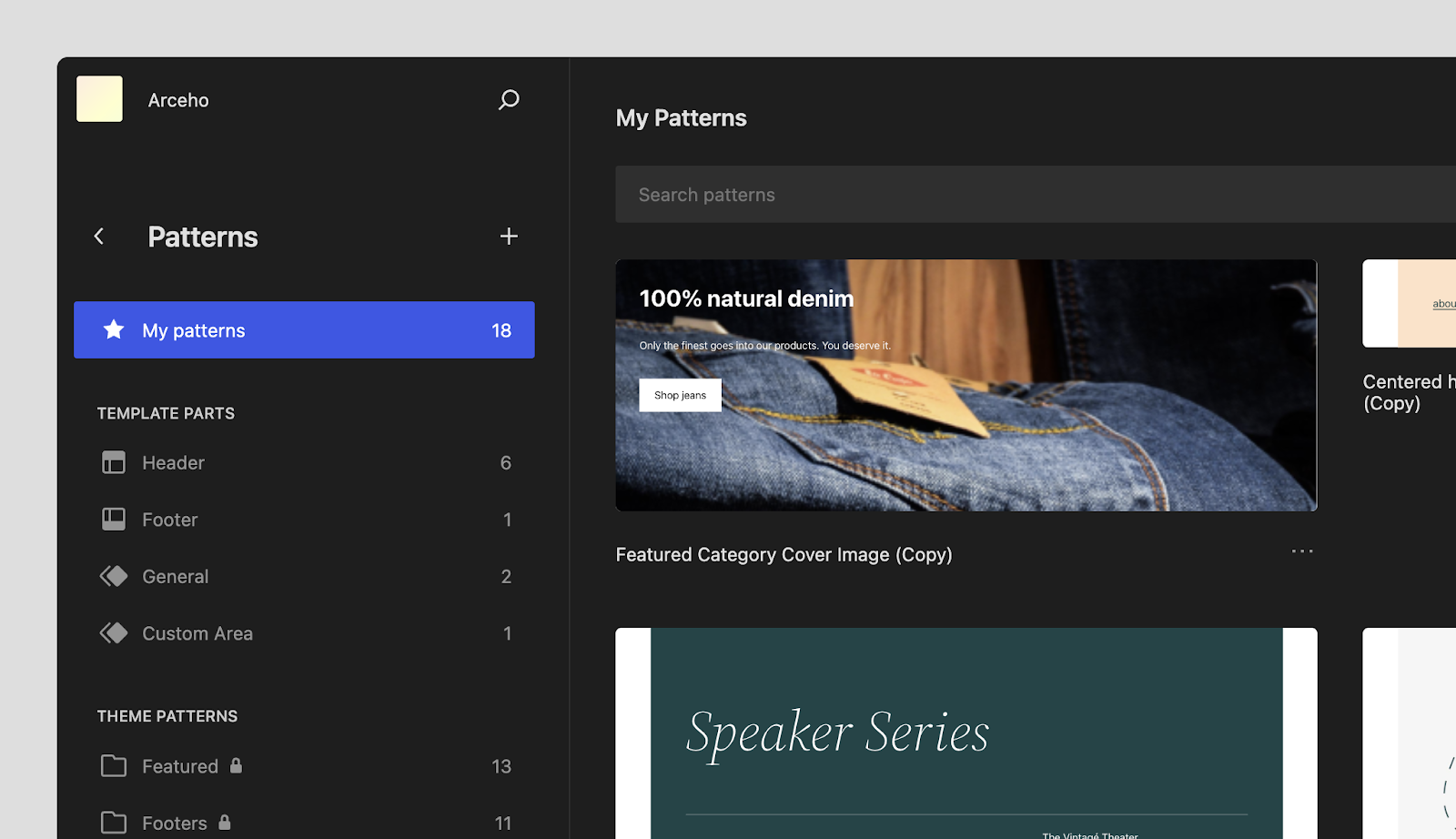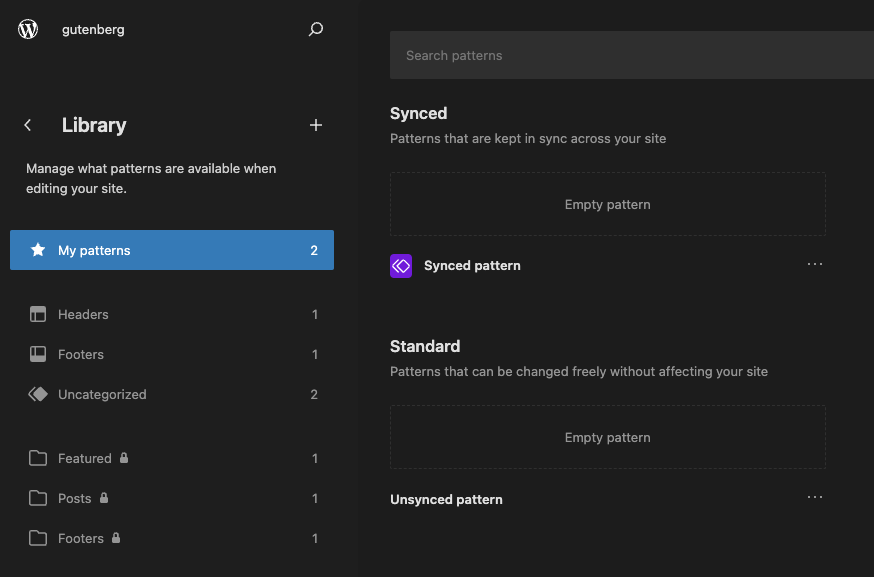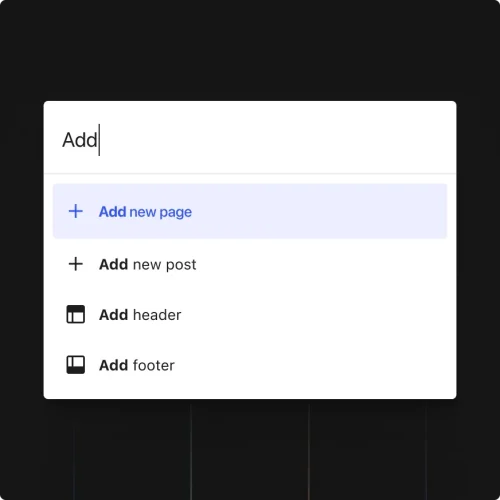
WordPress 6.3 “Lionel” was released today, named for Lionel Hampton, an American jazz vibraphonist, pianist, percussionist, and bandleader.
As the last release in Phase 2 of the Gutenberg project, many updates in WordPress 6.3 are targeted at polishing up customization features and the UI that supports them.
Content, templates, and patterns can now be edited together, without the user having to leave the Site Editor. This streamlines the workflow across templates and content, making it easier to build out a website with live previews. Users can now create new pages and view page details in the sidebar, an experience that is very similar to editing a page in the block editor except that it keeps the process inside the flow of design editing.
Pattern Management Expands to Include Creating and Syncing Patterns
Pattern management was a major focus of the 6.3 release. Users can now arrange blocks to create their own patterns and save them to a library where they can be searched and edited.

Reusable blocks have been renamed to synced patterns but still function the same way. They can be created and edited in the block editor and then inserted into posts or pages with the edits synced. Block patterns, once inserted, can be edited and are not synced across other instances.
The difference between synced and non-synced patterns is shown in the sync status details section within the pattern sidebar navigation screen. A new lock icon designates theme patterns as unable to be edited or modified.

New Command Palette Tool Enables Quick Search and Command Execution
WordPress 6.3 introduces a new Command Palette that was designed to be an extensible quick search and command execution tool. Users can do things like navigate to a page or post, add new content or a template, and toggle UI elements and editor preferences, among other things. It can be activated by using keyboard shortcuts (⌘+k on Mac or Ctrl+k on Windows) or by clicking the sidebar search icon in Site View, or clicking the Title Bar.
Contributors are considering adding support for WP-CLI commands in future iterations. The Command Palette is launching with a public API so developers can explore extending it to add their own commands.

WordPress’ Design Tools Updated to Include More Customization Capabilities
This release significantly expands the capabilities of existing design tools to make it easier to customize the finer details. Users can now design their own caption styles through the Styles interface without writing any CSS. Duotone filters are now available to be managed in Styles for blocks that support them and there is an option to disable them entirely. The Cover block’s settings capabilities have been expanded to include text color, layout controls, and border options.
A few other notable new features and improvements in WordPress 6.3 include the following:
- Style revisions in the Site Editor let users revert to previous versions of the design
- New Footnotes block automatically links annotations throughout the content
- New Details block allows users to easily show or hide content
- Preview block themes before activating
- Set aspect ratio on images
- Distraction-free mode now available in the Site Editor
- Revamped top toolbar
- Improvements to List View’s drag-and-drop functionality
- New modal for building templates with patterns
- Failed update safeguards
- Minimum supported version of PHP updated to 7.0.0
- 50+ accessibility improvements for labeling, tab and arrow-key navigation, revised heading hierarchy, and new controls in the admin image editor
This release also brings more than 170 performance improvements and is significantly faster than previous versions.
“Based on the performance benchmarks conducted for RC3, WordPress 6.3 loads 24% faster for block themes and 18% faster for classic themes, compared to WordPress 6.2, based on the Largest Contentful Paint (LCP) metric,” Google-sponsored contributor Felix Arntz said in a summary on the improvements. “For WordPress 6.2, those improvements amounted to 18% and 5% respectively, so it is fair to summarize that WordPress 6.3 is a major achievement in terms of performance. “
The most notable performance gains came from the introduction of defer and async support for the Scripts API and fetchpriority support for images, along with optimization of the emoji-loader.js script.
WordPress 6.3 is the result of the efforts of more than 650 contributors across 52 countries, with ~32% of them (205) being first-time contributors.
After updating to WordPress 6.3, users may notice a new “Get Involved” tab on the About page, designed to help new contributors find their place in the WordPress project. This addition closes a 10-year old ticket that suggested adding a “Contribute” tab to the About page. It features both code-based and no-code contribution opportunities with a link to a new WordPress.org/contributor page. This page debuts a new interactive tool that helps visitors find contributor teams that might be a good fit for their interests and capabilities.
“As the community looks to the future, all efforts turn to 6.4 and, subsequently, the transition into Phase 3, which is expected to introduce powerful collaboration tools to the website creation and management experience,” WordPress 6.3 release lead Matías Ventura said.
For more details on all the changes included under the hood in this release, check out the documentation for 6.3, the WordPress 6.3 Field Guide, and 6.3-related developer notes.

